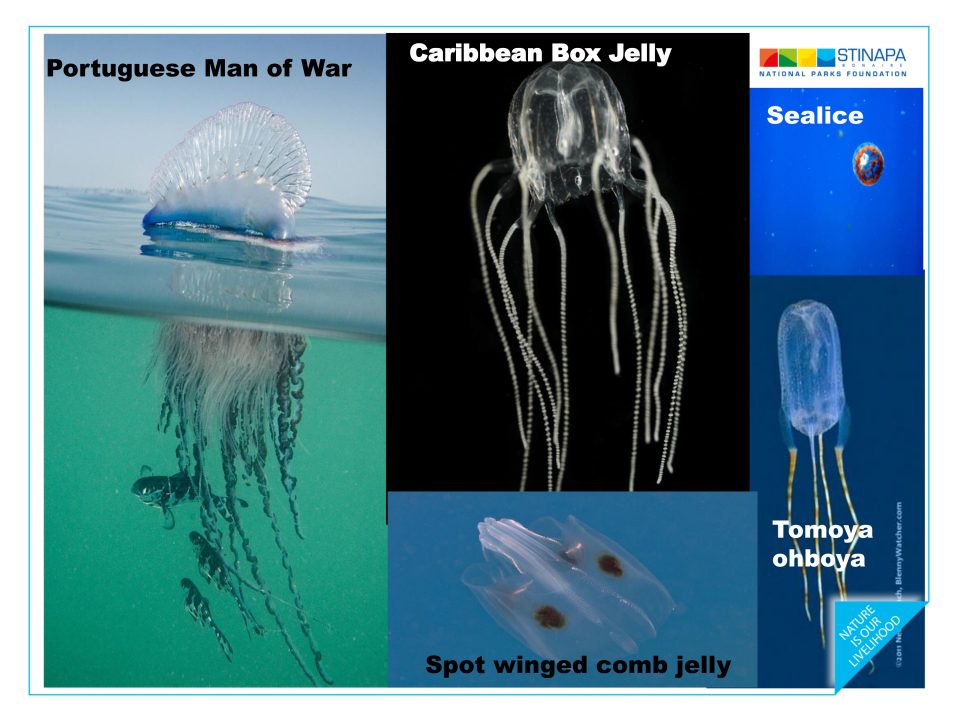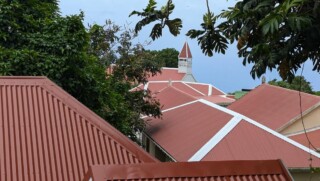Jellyfish alert for Bonaire

STINAPA warns watersporters for jellyfish in the waters
STINAPA has received information about a higher than usual amount of jellyfish in the sea. This is due to a combination of plankton bloom, which attracts jellyfish, and strong wind. Because we are now in a period where traditionally Bonaire residents and tourists like to visit the beach, STINAPA requests that this be taken into account.
Portuguese Man of War
It is a cnidarian with a segment filled with a gas of about 25 cm. Therefore it floats and catches the wind to ‘sail’. Portuguese Man of War has very thin, 70-meter-long tentacles. The victim is slain by poison-filled tiny “harpoons” on the tentacles. Usually the Portuguese Man of War lives in colonies far out at sea. During wind reversals they can come close to the coast. A sting is extremely painful.
Bonaire banded box jellyfish
The time around full moon is the mating period of the box jellyfish Tamoya Ohboya. Jellyfish mate in the evening near the coast. Swimming is not recommended during this time. Tamoya Ohboya is a translucent ‘balloon’ swimming sideways. The sting is very painful and can be dangerous. Each month during the first 10 days after the full moon a couple of box jellies Tamoya Ohboya are spotted on Bonaire.
Comb Jellyfish
Comb jellies are oval shaped box jellyfish with a bright striped ‘comb’ with which they propel themselves. These jellyfish do not sting. And they are great food for sea turtles!
The spot winged comb jelly glows in the dark when something moves – wave your hand in the water when you see them. A beautiful sight!
Medical assistance and self-help
Since summer 2016, the hospital on Bonaire has protocols in place for bites and stings, including those of jellyfish. Self-help tools are hot salt water, vinegar (note: not for stings from the Portuguese Man of War) and the medicine Sting No More, available at dive shops and pharmacies. Do not use: urine, fresh water, scratching or rubbing.












